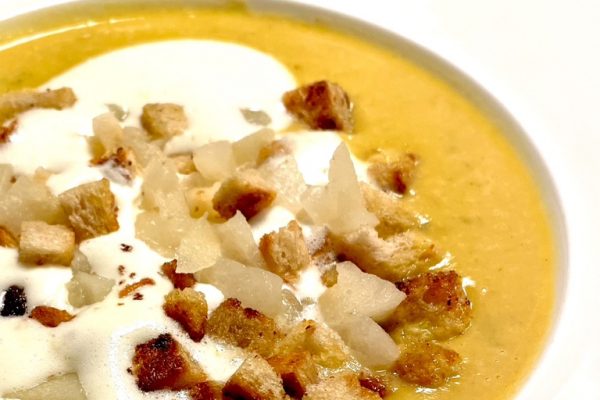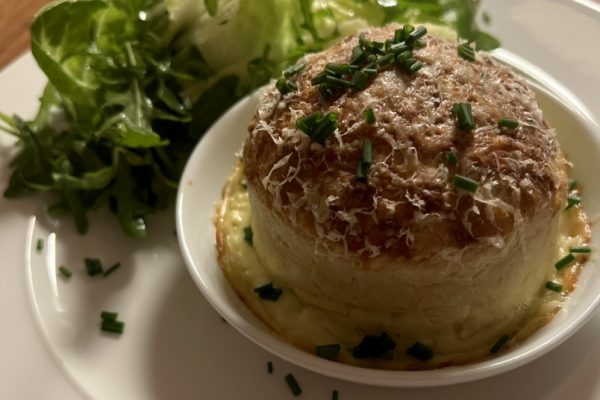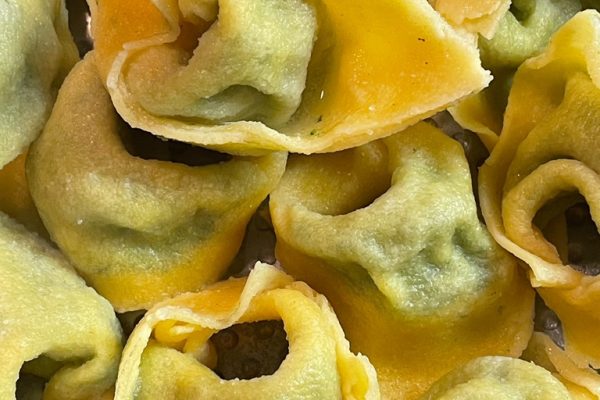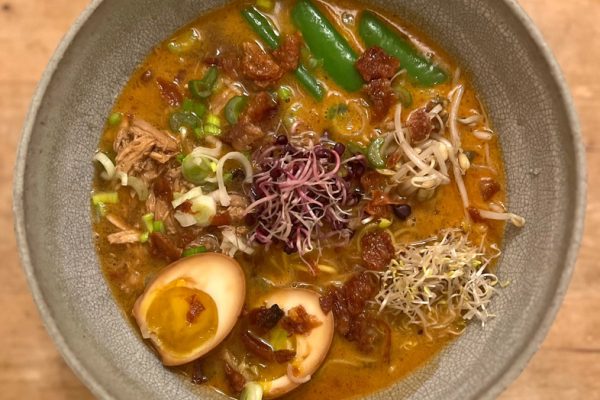With a few regional exceptions, Rösti is a grammatically feminine word, pronounced “Rööshti”, with a long “ö” and an “sh”. Rösti is a national dish of Switzerland and despite of or because of its simplicity delicious. It can be a great main course, for example with a sunny side up egg or mushrooms. But it also makes a fantastic side dish.
The variants differ from region to region. In Zurich, Rösti is made from raw potatoes and potatoes alone. Today we are showing the Berner Rösti, which uses pre-cooked potatoes and can also contain bacon, onions or cheese.
As with all dishes of regional or even national importance, there are a huge number of opinions on how to do it right (and only). We provide a recipe that is both authentic and will ensure you succeed with a Bernese Rösti.
The potatoes
Depending on whether you want to prepare the Zurich or Bernese version, certain types of potato are more or less suitable. For the Bernese Rösti, we simply recommend not using mealy potatoes (although we have even found a prominent recipe to the contrary). Larger potatoes also make less work.
The potatoes must be cooked the day before with the skin on, otherwise it simply won’t work. These boiled potatoes are called “Gschwellti” in the Alemannic part of Switzerland.
The potatoes are pre-cooked in salted water for 15 minutes so that they are not yet fully cooked. We like to add a little caraway seed to the cooking water for additional, very subtle flavour, but this is not a widespread technique.
Only the next day is the Rösti prepared.

The Rösti (she/her)
The “Gschwellti” are peeled, which is best done with a blunt table knife. They are then grated into thick strips that are as long as possible. There are special tools for this in Switzerland, but a coarse grater is perfectly adequate. It is only very important that the strips are not too fine and not too short, otherwise the Rösti will not bond properly later.
The grated potatoes are seasoned with salt and black pepper and mixed thoroughly but carefully with your hands. Under no circumstances should they be pressed together at this stage.
If bacon is to be added, now is the right time. However, it should not be too fatty and finely diced.

One half of clarified butter is melted in a non-stick pan, which provides a typical flavour element. Butter is less suitable because it is not as heat-resistant and the Rösti needs to fry for quite some time.
We first heat the pan on a fairly high heat, in our case level 8 out of 10. Then we spread our seasoned potatoes – together with the diced bacon if desired – in the hot clarified butter and sweat everything for about 2 minutes, gently stirring and turning the potato strips.

Now we turn the heat down considerably to just medium (for us: 5 out of 10) and gently press the potato strips together to form a thick pancake that is the same height over the entire surface. Only the edges will necessarily be a little thinner. The best way to do this is to use a silicone scraper to gently press over the potatoes from all directions until they are evenly shaped.

A Bernese Rösti with pre-cooked potatoes must be fried without a lid. It should not be moved until the underside is golden brown. This can easily take 10 minutes, or longer depending on the cooker and pan. It is best to carefully lift the Rösti with a kitchen tool after about 10 minutes to check the colour.
Then the pan is removed from the heat so that the Rösti comes away from it more easily. The other half of the clarified butter is spread around the edge of the Rösti, where it melts immediately and spreads around it.
Professionals now turn the Rösti by lifting the pan and pushing it forwards with a swinging motion so that the Rösti flies through the air like a pancake and lands with the other side back in the pan. If you don’t want to risk this, place as large a plate as possible on the pan, press it down firmly from above with one hand and turn the pan over with the other – you can then slide the Rösti from the plate back into the pan and use the kitchen tool to bring it back into perfect shape.

Again, the Rösti is fried over a medium heat and not moved until the other side is also golden brown. This usually takes a little less time than the first side because the pan is already hot and the potatoes have been pre-cooked further. Again, the best way to check the colour is to lift the Rösti slightly.
And that is all there is to it. It is best eaten immediately, but a Rösti can of course also be reheated.
If you would like to see the whole thing in video and in the original language, you will be helped here.

Enjoy.
And may the taste be with you.
Ingredients (for 4 people – makes 2 pans):
1.2 kg potatoes cooked the day before with skin in salted water (not mealy)
Optional: 1 teaspoon of caraway seeds for the cooking water
Optional: 100 – 160 g small bacon dices, not too fatty
3 tbsp clarified butter
2 level tsp salt
Black pepper from the mill (10 – 12 turns)




